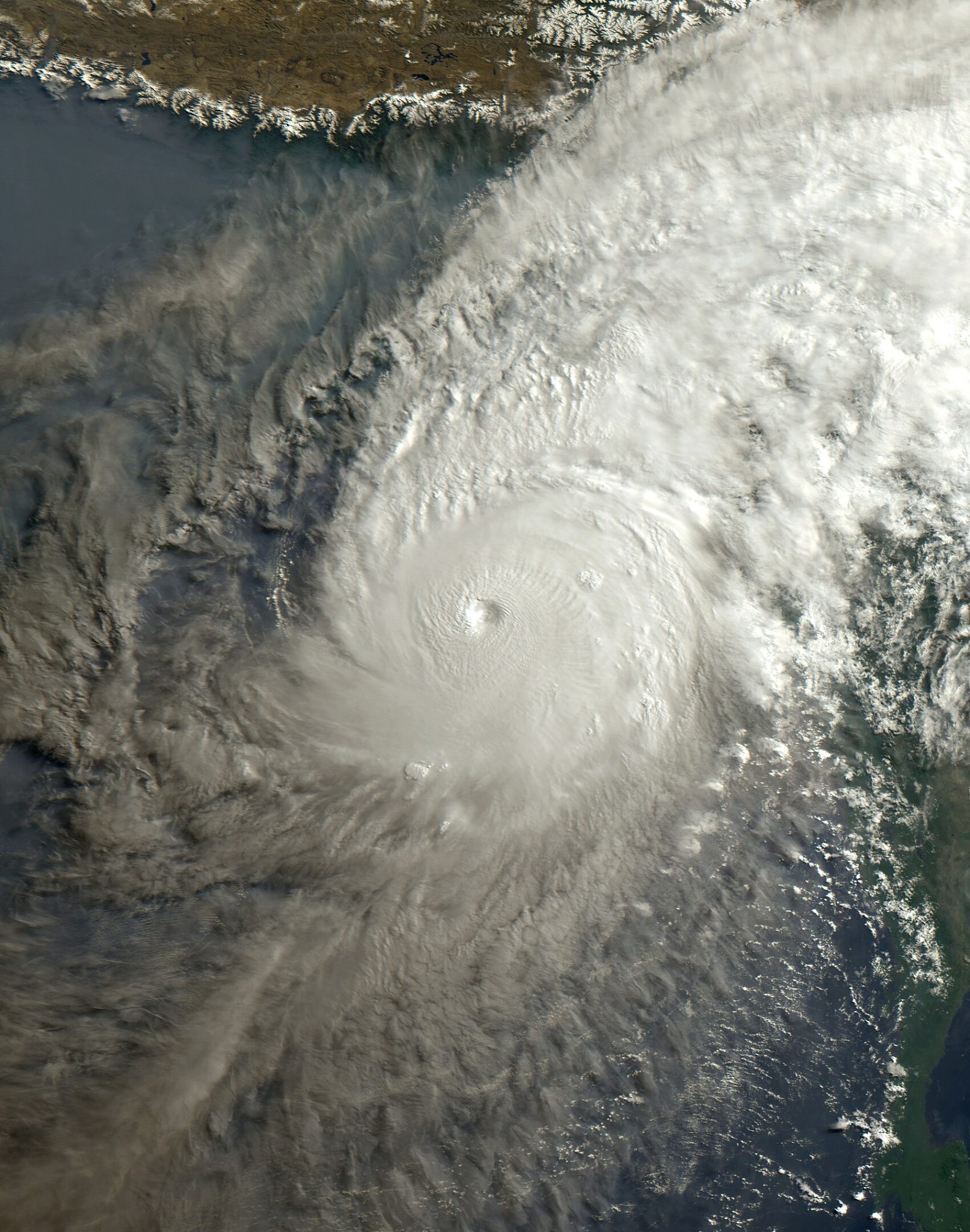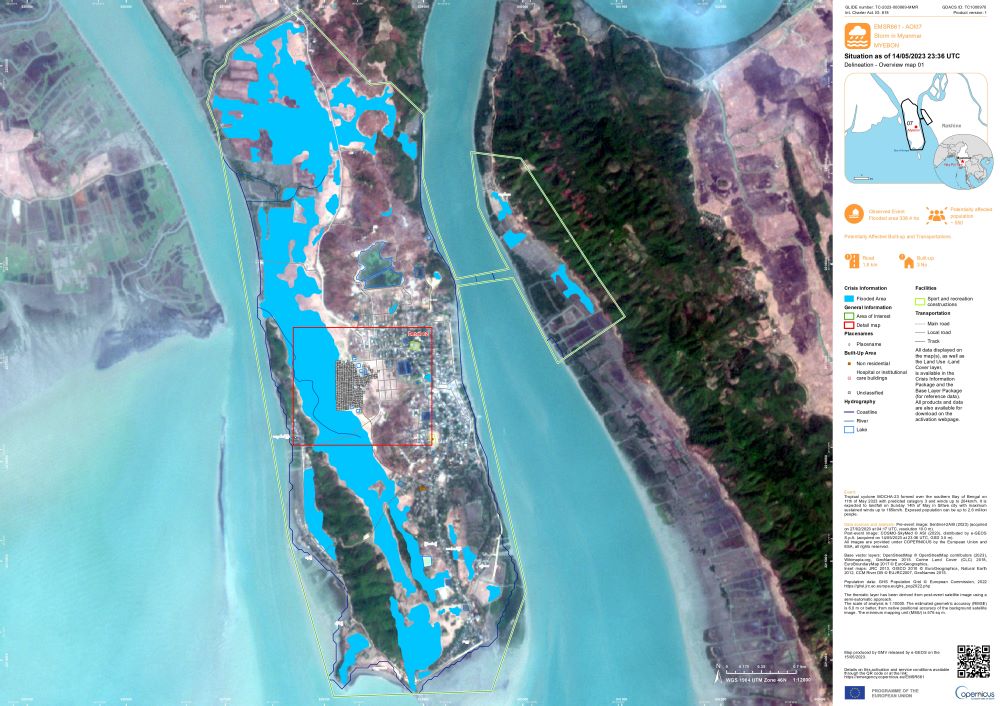Tropical Cyclone ‘Mocha’, a powerful storm with maximum sustained winds of up to 250 km/h, made landfall in Myanmar near Sittwe City on 14 May 2023. The cyclone has caused widespread damage and triggered evacuations in multiple regions of Myanmar, Bangladesh and India.

Since 13 May, the affected areas, including Rakhine, Chin, Magway, and Mandalay in Myanmar, Cox’s Bazar in Bangladesh, and the states of Mizoram, Tripura, and Manipur in India, have experienced heavy rainfall and strong winds. Additionally, coastal areas have been hit by storm surges. Before Mocha made landfall, storm surge with a height of 3 to 3.5 metres was predicted to inundate low-lying areas of north Myanmar and adjoining Southeast Bangladesh coasts, areas highly prone to flooding and home to thousands of refugees living in precarious conditions.
As of 15 May, the cyclone’s centre was situated over southern Sagaing State in northern Myanmar, with sustained winds of 120 km/h. The storm is expected to move across northern Myanmar and eventually dissipate. Further heavy rainfall is expected, exacerbating the already precarious situation.
In Myanmar, the impact of the cyclone has been severe, in particular in Sittwe and wider areas of Rakhine State. Reports indicate that five individuals have lost their lives, over 700 people have been injured, and more than 100,000 have been evacuated. The storm has also caused extensive damage to Rohingya Internally Displaced Persons (IDPs) camps and residential structures.
Over 2.2. million people live in affected areas of Myanmar, and 1.3 million in the worst affected areas. According to humanitarian actors, for 687,000 vulnerable people, the impact is expected to be extreme. Humanitarian organizations are actively conducting rapid needs assessments to provide assistance to those affected. Damage assessments and the humanitarian response have been hindered by telecommunications interruptions.
In neighbouring Bangladesh, the National Disaster Response Coordination Centre reports that a total of 414,170 individuals have been evacuated across 14 coastal districts. Although damage has been inflicted upon refugee shelters and key facilities in Cox’s Bazar district, home to a large population of Rohingya refugees, no loss of life was reported as of 15 May. Ongoing assessments are being conducted to determine the full extent of the damage.
In India, authorities have reported the storm has impacted around 3,000 people in the state of Mizoram, where around 600 people have evacuated.
The governments of Myanmar, Bangladesh and India, along with humanitarian agencies, are working to assist affected communities and provide necessary support. As the situation continues to unfold, relief efforts are expected to intensify, focusing on immediate assistance, rehabilitation, and long-term recovery plans.
To aid in the response efforts, Copernicus Emergency Mapping Service (EMS) was activated for both Myanmar and Bangladesh on 11 May. This system is designed to provide crucial mapping and emergency response support during natural disasters and will aid in assessing the extent of the damage caused by Cyclone Mocha.
Copernicus EMS analysis of satellite imagery of Myebon town of Mrauk-U District in Rakhine State, Myanmar, on 14 May showed over 300 hectares of land flooded.

Please note that the information provided is based on the available reports and may be subject to change as the situation develops.